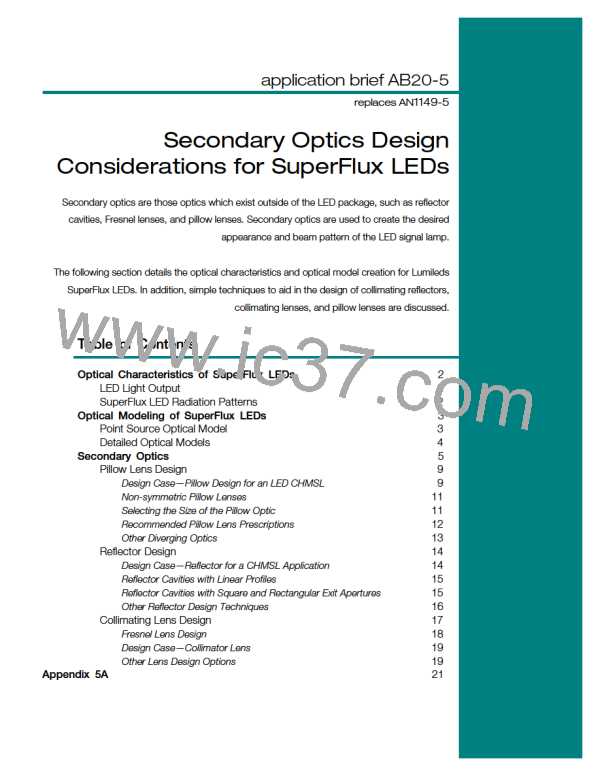Figure 5.19 Radiation pattern
produced by a toroidal pillow
(determine AV < Ah)
Non-symmetric Pillow Lenses
performance, provided the individual pillows are
small relative to the area illuminated by the light
source. For incandescent designs, this is not an
issue and aesthetic considerations dictate the
pillow size. However, for LED designs, the light
source is an array of individual LEDs. The pillow
lens pitch must be small relative to the area
illuminated by a single LED or the pillow will not
behave as designed. For this reason, pillows
designed for LED applications typically have a
pitch of 1 to 5 mm; where those designed for
incandescents can be as large as 10 mm.
In our previous example, the CHMSL radiation
pattern was treated as if it were symmetric
about its center. In this case, the radii of the
pillow were the same along the horizontal and
vertical axes, resulting in a spherical pillow.
In some signal lamps, the desired output beam
is much wider along the horizontal axis than
along the vertical axis. In these cases, the
optimum value of A will be larger for the
horizontal axis (Ah) than the vertical axis (Av).
The resulting geometry would be that of a
circular toroid, which can be visualized as a
rectangular piece cut from a doughnut as
shown in Figure 5.18.
Figure 5.20 shows a top view of a single pillow
with the pitches along both the horizontal, Ph ,
and vertical, Pv, axes. In addition, the cross-
section geometry through the center of the
primary axes is shown.
For non-symmetric pillow designs, an exercise
similar to that performed for the CHMSL
example must be performed for both the
vertical and horizontal axes in order to
determine Av and Ah. The resulting isocandela
plot of the radiation pattern will appear as
shown in Figure 5.19.
After Ah and Av have been calculated, and the
pitch has been chosen along one axis; the radii,
R, and pitch along the other axis can be
determined by using the following equations:
(Note: Ph was chosen as a known value for this
example.)
Selecting the Size of the Pillow Optic
After determining A for both axes, the next step
is to determine the size, or pitch of the pillows.
The pitch of the pillow typically does not effect
11

 LUMILEDS [ LUMILEDS LIGHTING COMPANY ]
LUMILEDS [ LUMILEDS LIGHTING COMPANY ]